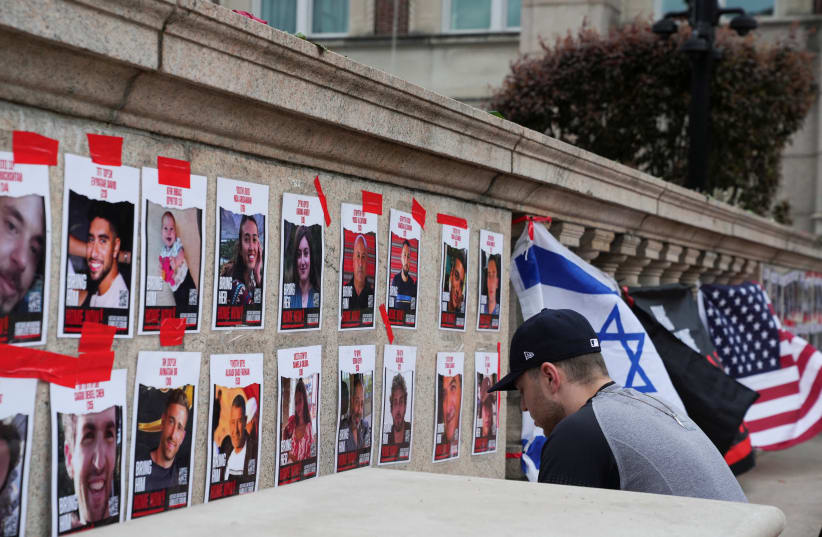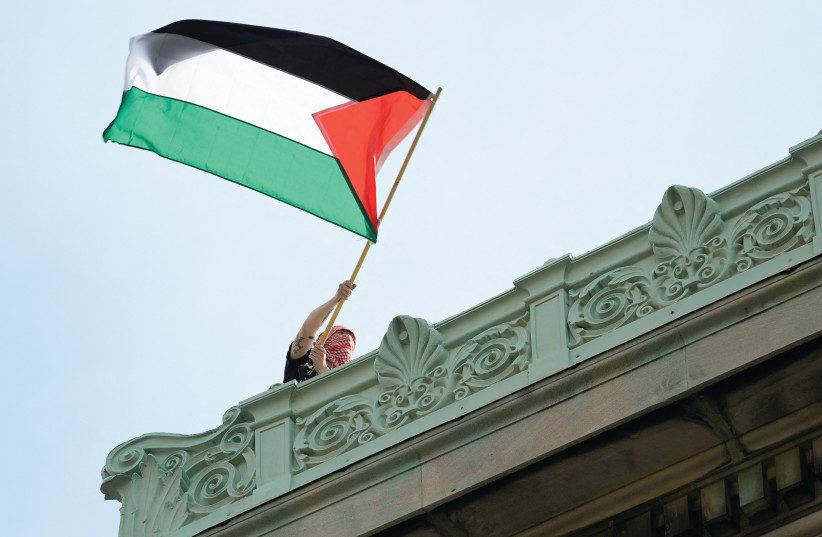“Come gather ’round, people, wherever you roam; and admit that the waters around you have grown… The battle outside ragin’ will soon shake your windows and rattle your walls; for the times they are a-changin’.” – Bob Dylan, 1964
Alas, times – and history itself – is not really changing at all; it is just repeating itself.
The week(s) ahead offer both tears and cheers as they lead us once again into the modern “Yom” holidays: Yom Hashoah, Yom Hazikaron, and Yom Ha’atzmaut (and later, Yom Yerushalayim). But the “Yoms” this year are of a very different nature.
Yom Hashoah (Holocaust Remembrance Day) comes on the verge of what may very well be the beginnings, God forbid, of another Holocaust in the making; while Yom Hazikaron (Remembrance Day for Israel’s Fallen) comes in the midst of an existential war that has brought us far too many fallen soldiers to memorialize, and placed Israel at its most perilous precipice since the state was founded.
Dangerous times: Antisemitism and anti-Israel protests
We live in a dangerous world at a dangerous time, with equal parts ignorance and evil surrounding us. The well-orchestrated and well-financed protests on American university campuses are eagerly populated by students who are more than willing to jump on what has become a trendy bandwagon, while muttering mindless mantras. It doesn’t matter that they have no concept whatever of Middle East realities or complexities – “Palestine” for them is not actually a physical place.
Indeed, my experience with these confused kids is that they can’t locate it on a map – it is more a concept and a cause that can be succinctly summed up in one sentence: People are suffering, and the Jews are to blame.
Tragically, there is no shortage of un-Jewish Jews who have joined together with the antisemitic mob, helping to add credence to their crusade. This is a syndrome aptly described by the well-known Holocaust survivor Viktor Frankl of logotherapy fame.
Dr. Frankl describes how he witnessed Jews in the death camps taking little sticks and fashioning them into “SS” shapes, which they then placed on their shoulders in a bizarre imitation of their Nazi guards. This, he said, was an attempt of the prisoners to gain a false sense of empowerment by “joining” with their persecutors.
You will often hear “all-knowing” authorities claim that education is the only effective path to tolerance and mutual understanding. But that simplistic and naive philosophy – well meaning as it may be – has been blown sky-high by the thousands of university students and educators whose minds have been irreparably infected and who are adamantly opposed to intellectual debate, the primary wellspring of truth.
As one of my professors once told me, when I expressed to him my astonishment at the rabid antisemitism of seemingly brilliant authors, “Never confuse intelligence with wisdom.” And so we have Gays for Gaza and Homosexuals for Hamas – the modern equivalent of Native Americans for Custer.
We have been there before, of course. The book burnings in Berlin. The assembly of Polish “good neighbors” cheering as the Jews were evicted from their homes and marched down the main streets to the train stations. The cold-hearted response – or lack thereof – of police and security officials who are either too scared or too indifferent to step forward and stop the madness.
It never begins with violence – though that seems surely on the horizon; it starts when the authorities are unwilling or unable to confront the crowds and defend the marginalized and maligned. And so, the Nazi menace took time before it morphed into mass murder; the masses first had to be manipulated and the lynching had to be legalized before the actual killing could begin.
And do not imagine that this assault upon Israel and the Jews (this phrase can and should be said in one breath) will cease when and if the IDF pulls out of Gaza, or even in the event that a mutually agreed settlement is made with the Palestinian Authority. Once the evil genie has been released, it will not easily be put back in the bottle.
OF COURSE, there is a major difference between the previous century and ours. Now we have a state, which has welcomed into its midst the majority of world Jewry and flourished in a region where others have failed. We have an army that, with all its flaws revealed on Oct. 7, still remains a courageous and consummate fighting force that is the pride of the nation. And we have a sense of destiny, a resolute, national will that we will – we must – survive, despite the challenges we face and the heavy price we may pay.
Over Passover, I had an inspirational encounter with a Holocaust survivor, now in her late 90s, who reinforced my faith and restored my sense of optimism. “During those dark days of the Shoah,” she told me, “we had no hope, we had no heroes. In the camps, we were forced by our oppressors to look down, and even when we did occasionally lift up our eyes, we saw no horizon.
“But” – and here she smiled as she lifted her Haggadah – “in every generation ‘they rise up to destroy us’ and somehow, ’God saves us from their hands.’ We were saved then, and we shall be saved again.” There wasn’t an ounce of doubt in her voice.
One of my favorite stories tells of the dramatic announcement by scientists that, despite the biblical promise, the world would be engulfed by a massive flood in just three days’ time. The media then allow several clergy to issue a global proclamation.
The priest addresses his congregants and tells them that they should hurry and try to do all the things they longed to do in the short time left to them. The imam speaks to his flock and urges them to make amends over the next three days with anyone they may have wronged.
The rabbi then delivers his message to one and all: “People, we have exactly 72 hours to learn how to survive underwater.”
Hirsh Glick, the Yiddish poet who survived the Vilna ghetto, said it best in “Zog Nit Keynmol,” the “Partisan Song”:
Never say this is the final road for you,
though leaden skies may be concealing days of blue.
Because the hour we have hungered for is near;
beneath our feet the earth shall thunder: We are here!
The writer is the director of the Jewish Outreach Center of Ra’anana. jocmtv@netvision.net.il

